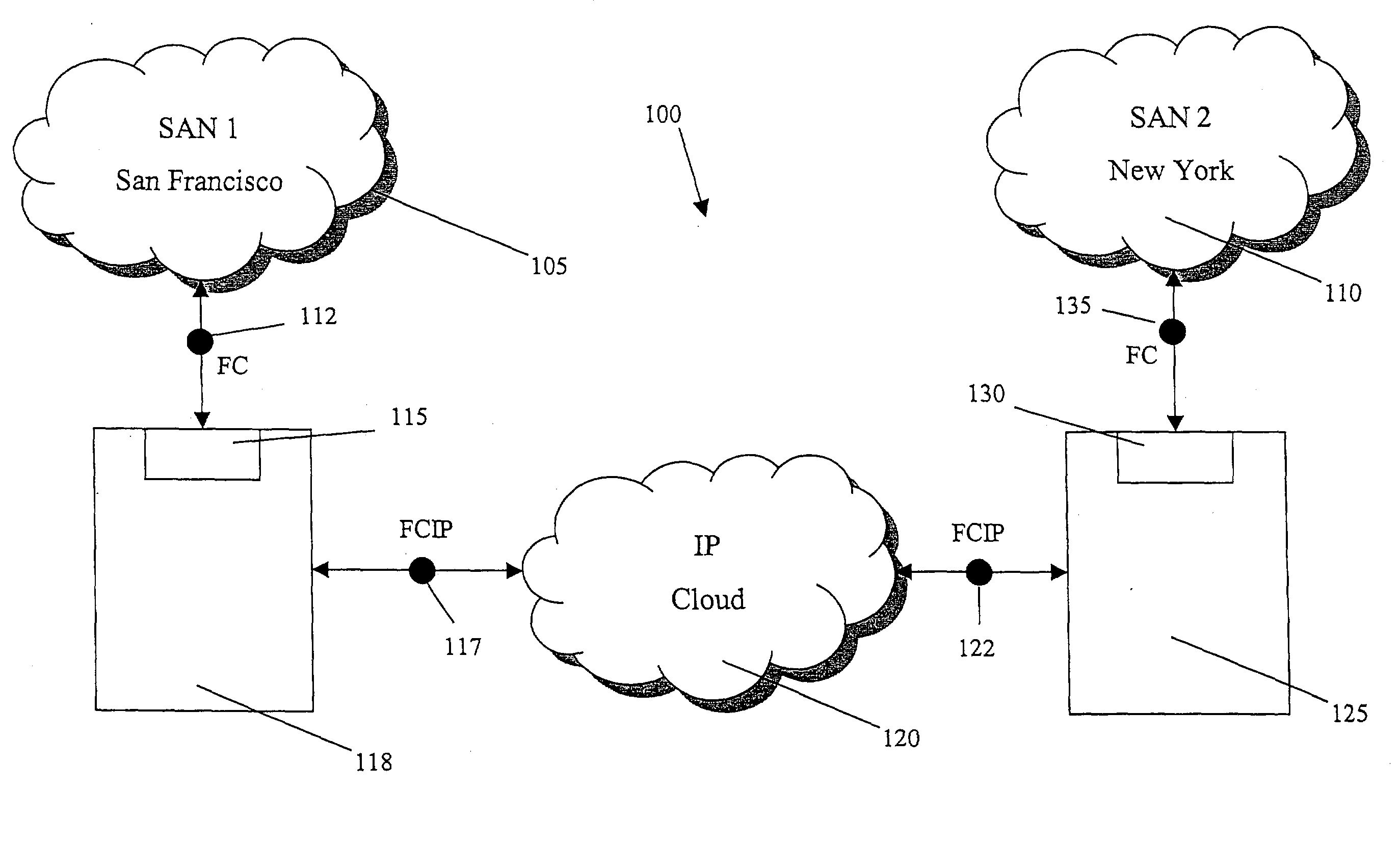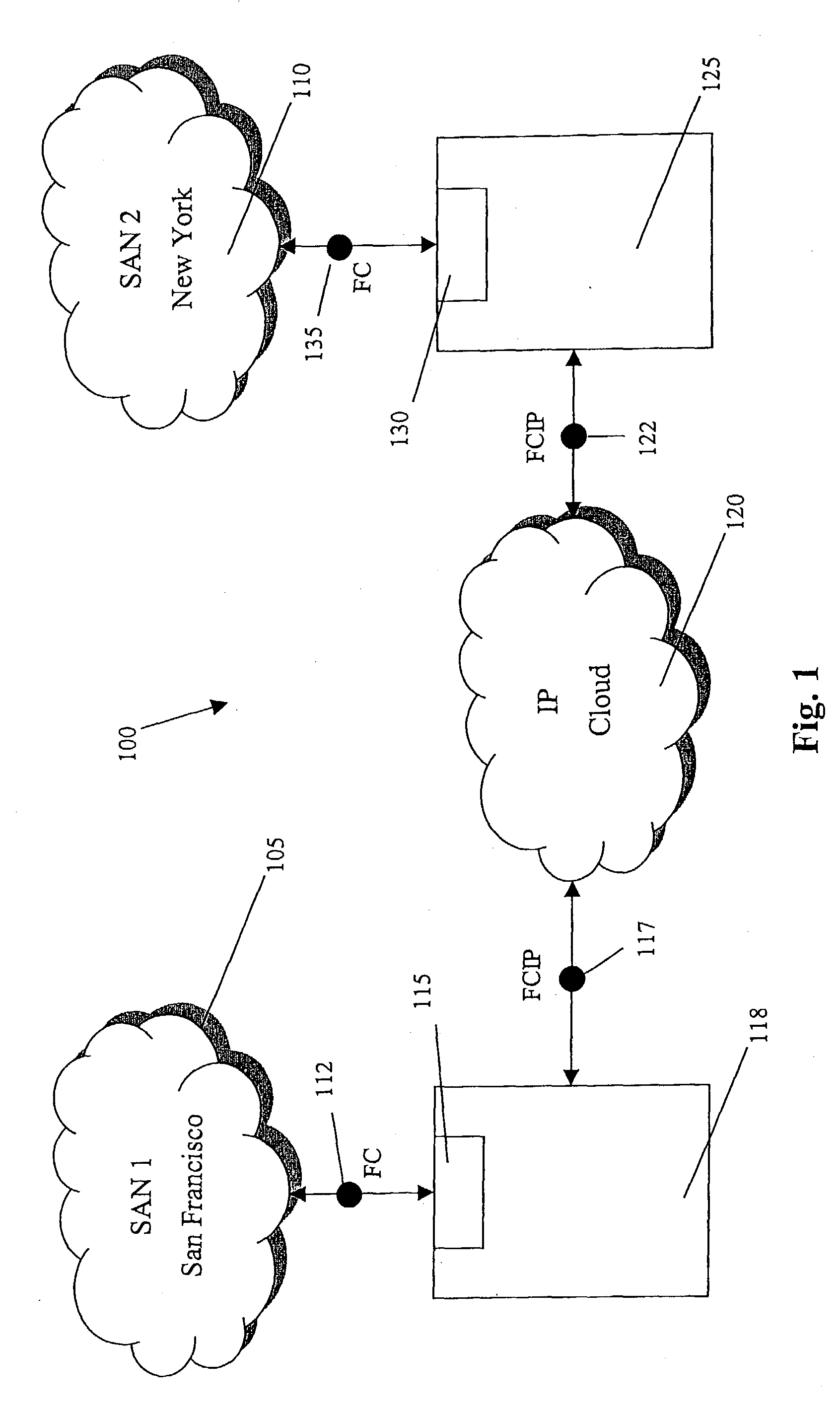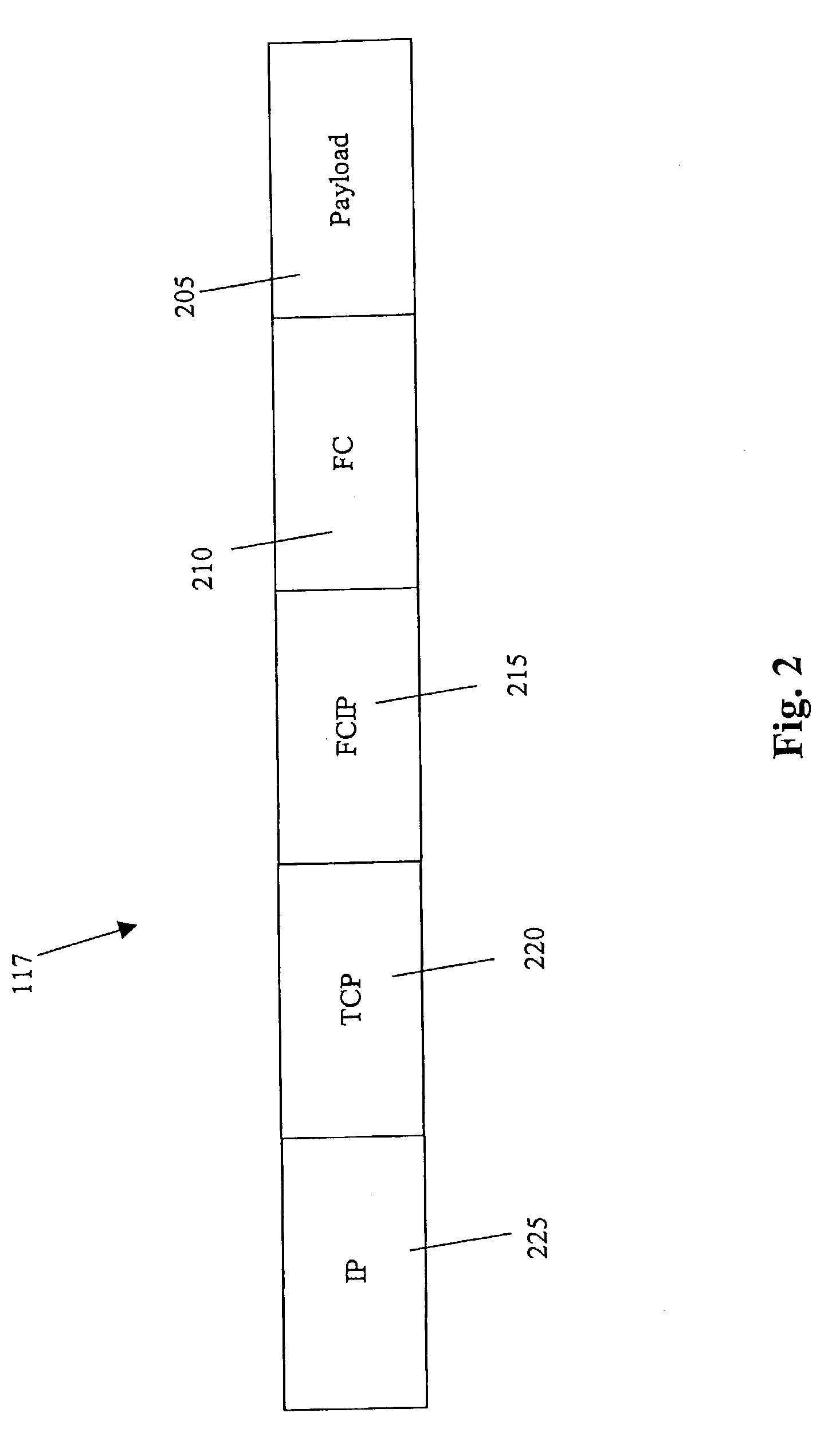Methods and devices for transmitting data between storage area networks
a technology for storage area networks and data transmission, applied in data switching networks, store-and-forward switching systems, multiplex communication, etc., can solve the problems of reducing the advantages associated with sans, reducing the cost of encapsulation and de-encapsulation of fc packets, and causing difficulties
- Summary
- Abstract
- Description
- Claims
- Application Information
AI Technical Summary
Benefits of technology
Problems solved by technology
Method used
Image
Examples
Embodiment Construction
[0038] FIG. 1 depicts system 100 according to some aspects of the present invention. System 100 includes storage area network ("SAN") 105, which is located in San Francisco in this example. SAN 105 includes a plurality of hosts, data storage devices, switches and / or routers, servers and other components well known to those of skill in the art. Here, SAN 105 is interconnected using optical fiber. A Fiber Channel ("FC") protocol is used for relaying information within SAN 105. SAN 110 is a similar storage area network located in New York. Obviously, SAN 105 and SAN 110 could be located anywhere in the world. Moreover, while only two SANs are illustrated in FIG. 1, any number of SANs could be interconnected in system 100.
[0039] Under current conditions, the maximum radius of SANs is on the order of 10 miles. This fact is due in part to the limited deployment of optical fiber in local or municipal networks. However, it is often the case that a user in one SAN, (e.g., SAN 105), will wish...
PUM
 Login to View More
Login to View More Abstract
Description
Claims
Application Information
 Login to View More
Login to View More - R&D
- Intellectual Property
- Life Sciences
- Materials
- Tech Scout
- Unparalleled Data Quality
- Higher Quality Content
- 60% Fewer Hallucinations
Browse by: Latest US Patents, China's latest patents, Technical Efficacy Thesaurus, Application Domain, Technology Topic, Popular Technical Reports.
© 2025 PatSnap. All rights reserved.Legal|Privacy policy|Modern Slavery Act Transparency Statement|Sitemap|About US| Contact US: help@patsnap.com



